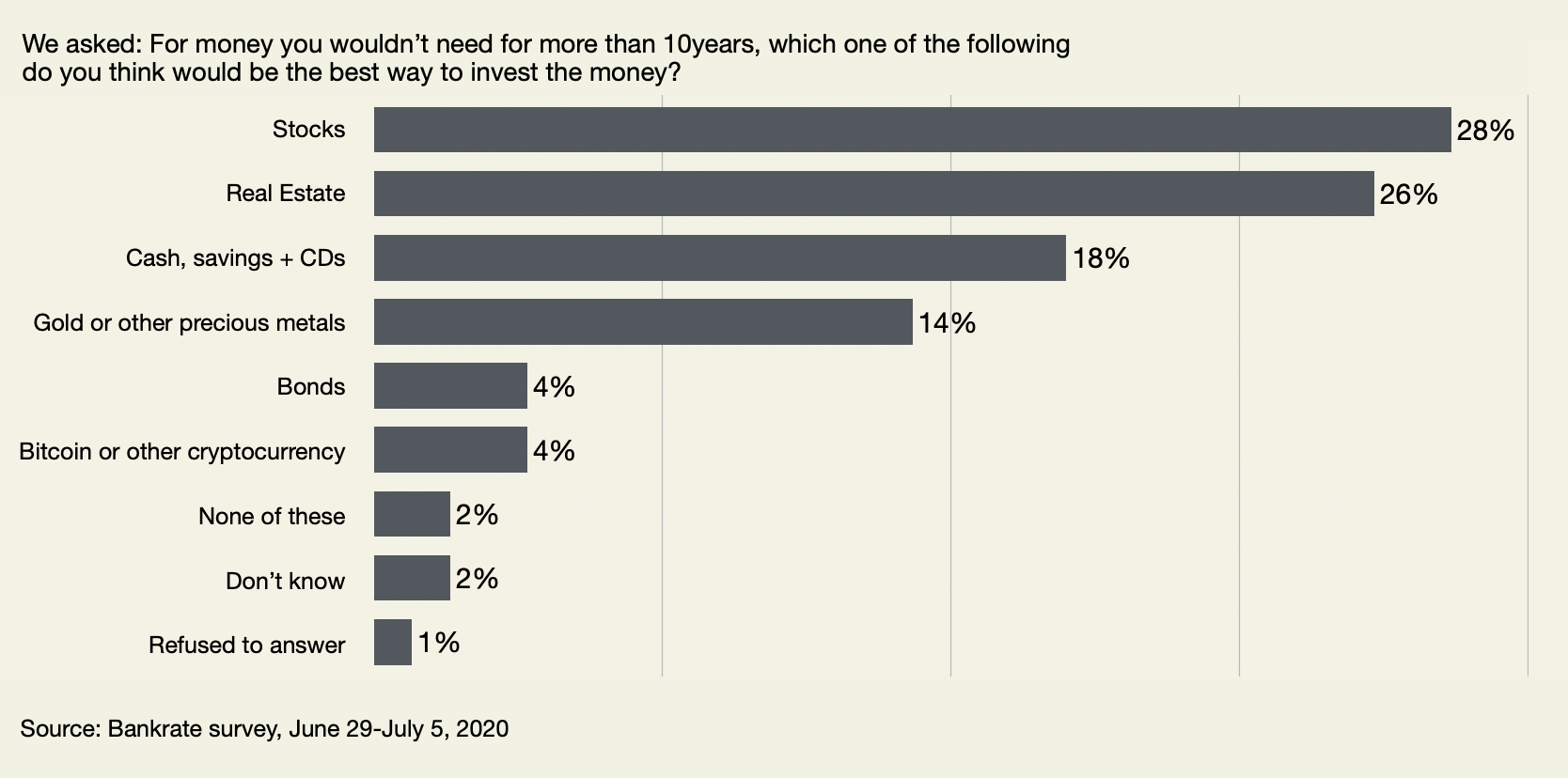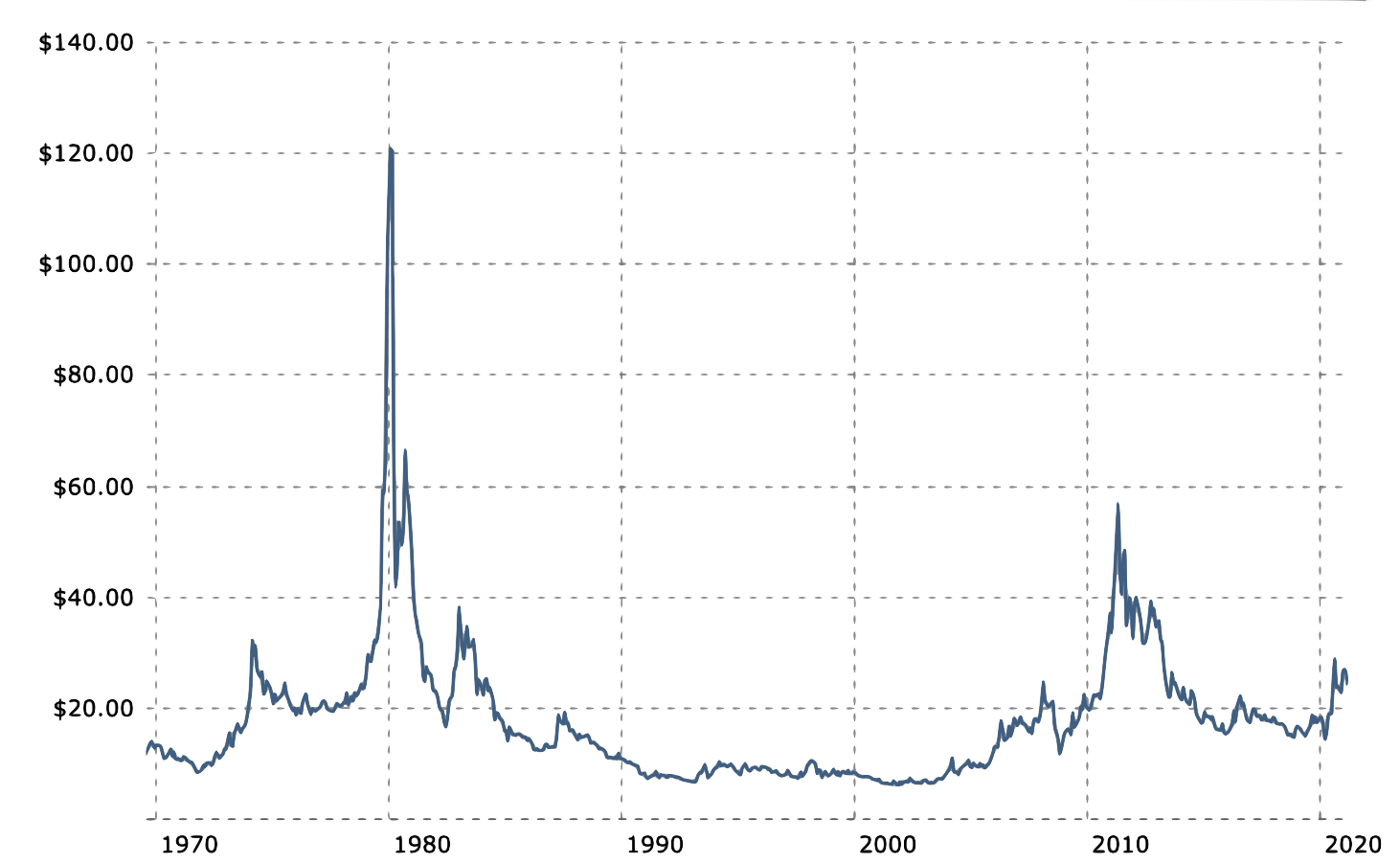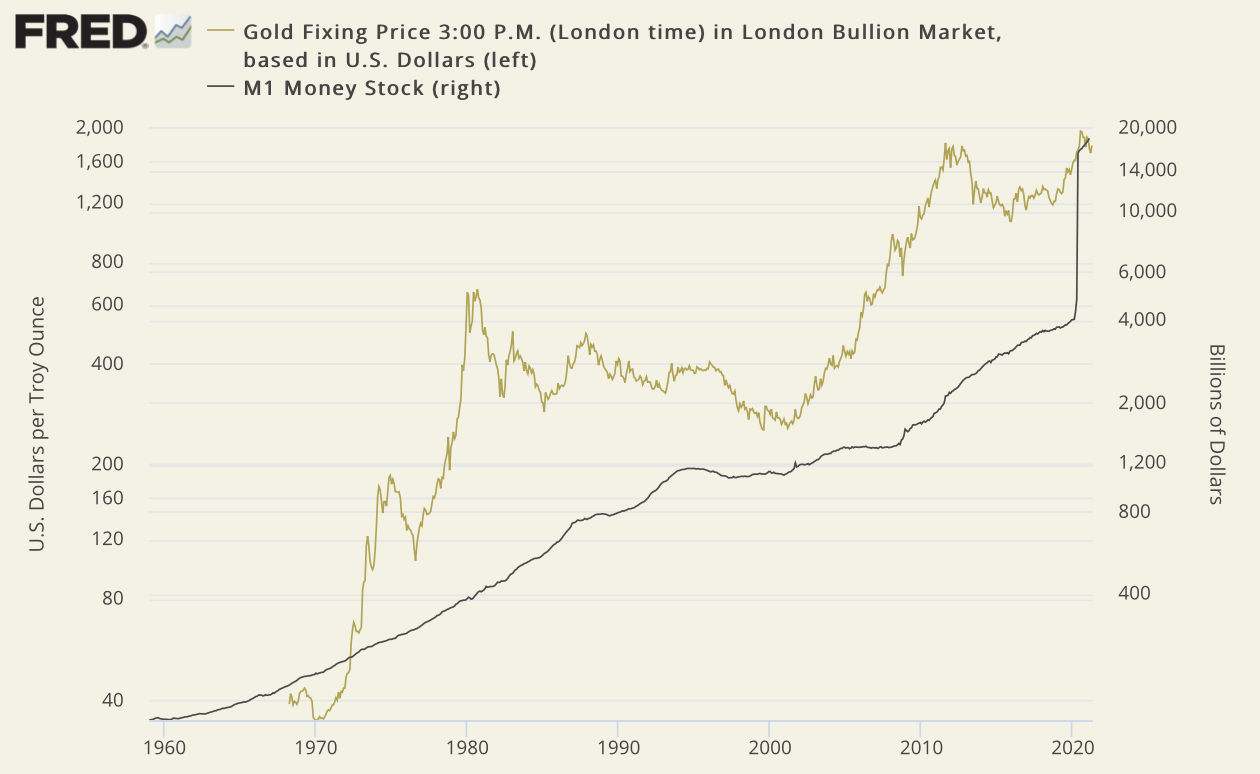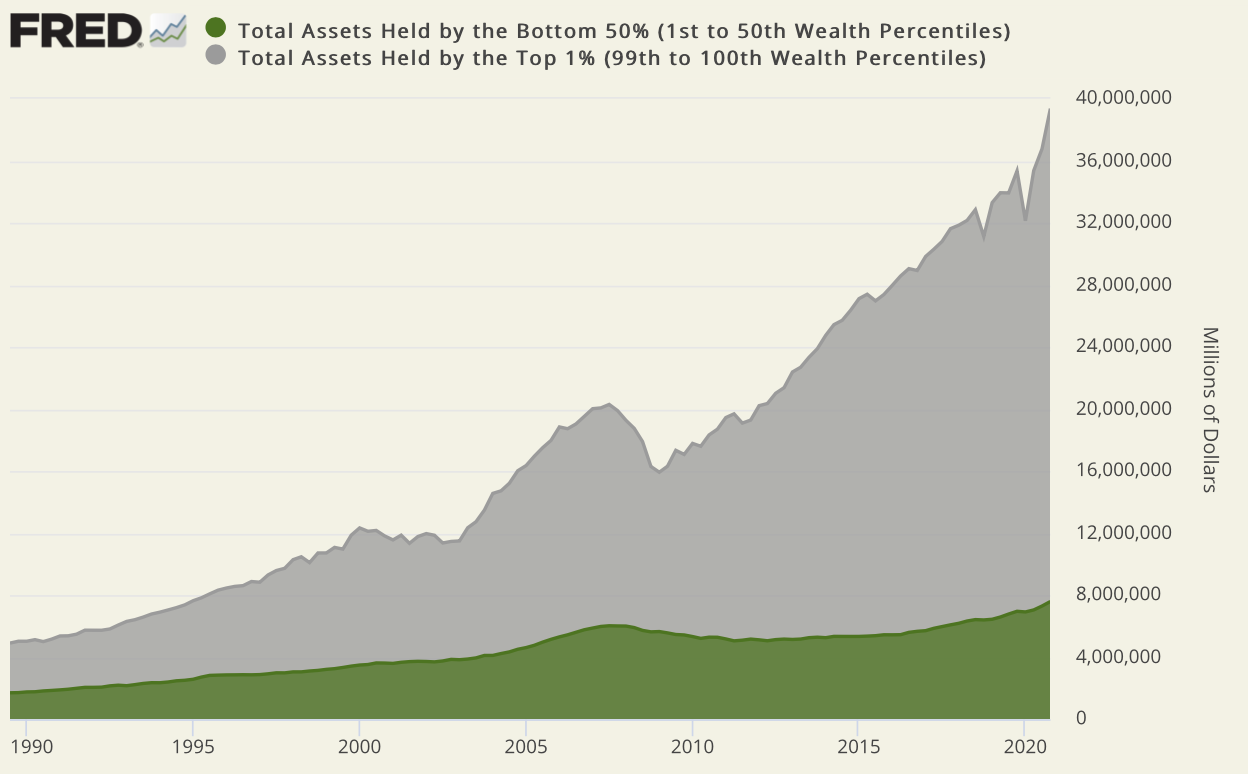“Survivalism,” wrote Evan Osnos in a 2017 article for The New Yorker, “the practice of preparing for a crackup of civilization, tends to evoke a certain picture: the woodsman in the tinfoil hat, the hysteric with the hoard of beans, the religious doomsayer. But in recent years, survivalism has expanded to more affluent quarters, taking root in Silicon Valley and New York City, among technology executives, hedge-fund managers, and others in their economic cohort.”
We have always taken exception to the mainstream media’s portrayal of the ordinary gold owner as “the woodsman in the tinfoil hat”. . . etc. Many among the media are utterly amazed to learn that people like Steve Huffman (Reddit, CEO), Peter Thiel (PayPal founder), and the long roster of other luminaries mentioned in this New Yorker article are identified as “preppers” in one capacity or another. They would probably be even more amazed to learn that many of this same group are likely to be gold and silver owners. We say “likely” because precious metals owners by and large are a group reluctant to advertise their ownership.
As it is, they take a place alongside a wide range of Americans who own precious metals – physicians and dentists, nurses and teachers, plumbers, carpenters, and building contractors, business owners, attorneys, engineers, and university professors (to name a few.) We know because that is the description of our clientele here at USAGOLD. Gold ownership, in short, is pretty much a Main Street endeavor. In a Bankrate survey taken last June, one in seven investors (14%) chose gold or other precious metals as the best place to park money they wouldn’t need for more than ten years – making it the fourth most popular category. Similarly, a 2020 Gallup poll found that 17% of American investors rated gold the best investment “regardless of gender, age, income or party ID. . .” One might assume that if Bankrate or Gallup took a similar poll today, even more investors would give the precious metals a thumbs up given what has occurred over the past year.
Those well-to-do preppers, as it turns out, were uncannily ahead of the times. A little over three years after the New Yorker article was published, large numbers of the not-so-super-rich followed in their footsteps – setting up “bugout” retreats in the countryside and small-town America (though for reasons unforeseen in the article) while a good many fled the big cities permanently for safer environs. That mindset – the general flight to safety – has echoed loudly in the precious metals markets. The World Gold Council reports global retail gold investment demand running at record levels in 2020. As for silver, just last week, the Silver Institute, a research organization not given to hyperbole, forecasted an eye-catching 26% increase in physical silver investment for 2021 based on current trends.
Bankrate Survey of Investors

Chart courtesy of BankRate.com • • • Click to enlarge
––––––––––––––––––––––––––––––––––––––––––––––––––––––––––––––––––––––––––––––––––––––––––––––––––
The six keys to successful gold ownership
This eye-opening, in-depth introduction to precious metals ownership will help you avoid many of the pitfalls that befall first-time investors. Find out who invests in gold, what role gold plays in serious investors’ portfolios, and the when, where, why, and how of adding precious metals to your holdings. To end right, it is critical that you start right, and the six keys to successful gold ownership will point you in the right direction.
––––––––––––––––––––––––––––––––––––––––––––––––––––––––––––––––––––––––––––––––––––––––––––––––––
Silver’s next move ‘could be extraordinary’
Commodity analyst Andrew Hecht who once structured one of the largest silver bullion positions on record while at Wall Street’s Salomon Brothers, characterizes silver’s price action since the beginning of the year as a rubber band stretched to its limit. “When it snaps,” he says, “watch out, the move could be extraordinary.”
“The foray into the silver market,” he says in an analysis posted at Seeking Alpha, “is a long story for another time. However, suffice to say, I learned a lot about silver liquidity, amassing a quarter of a billion-ounce position and liquidating it during that time. Silver can be a wild and volatile market when it decides to move. However, it is highly liquid during consolidation periods. Hundreds of millions of ounces can change hands without much price action. Silver has a lot more going for it in 2021 at over $25 per ounce than it did in 1995 at the $5 level…Silver’s consolidation period and tightening price ranges could be the prelude to a new record high above the 1980 $50.36 peak in the COMEX futures market.”
Analyst Peter Krauth ups the ante on silver, predicting a price double Hecht’s target. “If we account for inflation,” he writes in a piece posted recently at the FXEmpire website, “and that’s massively understated ‘official inflation,’ then silver prices peaked at $120 in 1980 and around $57 in 2011. (Please see the chart below.) Today’s price near $24 is still well below those levels, suggesting a lot of upside remains ahead. In fact, at $24 today versus the inflation-adjusted $120 in 1980, silver is currently about 80% below that peak…Looking at silver from a technical perspective, in my view, we are either at or near a final bottom for this correction.” He concludes: “It’s time to be a silver contrarian. History has rewarded us repeatedly. $100 silver is well within reach.”
The inflation-adjusted price of silver
(Based on the Bureau of Labor Consumer Price Index, 1970 to present)

Chart courtesy of Macrotrends.net

Get real, be real, buy real
“When I saw the Wall Street Bets people come to the fore, and start talking about silver, it delighted me because I knew immediately that it was a younger generation and that the word would spread rapidly. It brought a great deal of joy to me, seeing there are a lot more people willing to invest in silver, recognizing it as a great opportunity.” – David Morgan, macroeconomist and leading authority on the silver market, interview with Claudio Grass
We recently secured a strong inventory in silver American Eagles, which we are releasing at posted prices. As you might already know, the availability of silver Eagles is very limited – in fact, they are almost impossible to find. We have limited availability. First come-First served.
1-800-869-5115 x100, or by direct purchase at our Online Order Desk
–––––––––––––––––––––––––––––––––––––––––––––––––––––––––––––––––––––––––––––––––––––––––––––––––
China renews appetite for gold
Its state-owned holdings could be as high as 14,500 metric tonnes.

“With China’s economy rebounding strongly since the second half of last year,” reads a recent article in the South China Morning Post, “its appetite for gold jewellery, bars, and coins has also recovered, and since January domestic prices have been higher than global benchmark rates, making it profitable to import bullion. The People’s Bank of China (PBOC), the nation’s central bank, controls how much gold enters China through a system of quotas given to commercial banks.” The SCMP goes on to say that China would import about 150 metric tonnes of gold in April and May, worth about $8.5 billion. When it comes to gold, China is a price taker, not a price maker, as so many thought would be the case when it opened gold trading in Shanghai in 2019. For the time being, it is content to allow its commercial banks and citizenry to accumulate at current prices. “China has much more gold than it says it does,” writes investment analyst Dominic Frisby in a recent Money Week article, “In fact, China has more gold than the US. Its enormous gold hoards are all part of its grand global reserve currency status designs.” Based on calculations by gold market experts detailed at the link, Frisby estimates China’s real reserves could be as high as 14,500 tonnes compared with U.S. reserves of 8,133 tonnes.
Beyond CPI: Gold as a strategic inflation hedge
“A broader metric than CPI may be more adequate to measure true inflation,” writes the World Gold Council in a recent research report. “[I]f we use a broader measure than CPI the evidence suggests a stronger and more consistent relationship [between gold and inflation]. This has two important implications: gold is a global asset and a hedge against not just the price of goods and services but also the erosion of purchasing power in general – be that against property, collectibles, or financial assets that are excluded from CPI indices. It is also a hedge against the debasement of a currency should the value of that currency be slowly eaten away as supply is increased…Money supply is closely linked to nominal GPD growth and may reflect this important consumption dynamic as well as the inflation dynamic.”
All in all, I see the World Gold Council’s approach as rather ingenious. With inflationary concerns moving to the forefront, a handful of analysts have made strained attempts to show that gold is not truly an inflation hedge – an endeavor that generally requires the manipulation of timelines and statistics to make the point. WGC takes an approach in this study that uniquely circumvents the issue by acknowledging the post-2008 era of quantitative easing. The chart below illustrates the point. The monetary growth in 2020, says the WGC, “threatens inflation more than it did in 2009.”

Sources: St. Louis Federal Reserve, Federal Reserve Board of Governors, ICE Benchmark Administration
Click to enlarge
Former Treas Sec Larry Summers goes off the reservation
Says Biden economic policies are “substantially excessive”

Lawrence Summers is probably the leading light in Democrat circles when it comes to economic policy. He is the former Secretary of the Treasury under Bill Clinton, so his going off the reservation is an event in and of itself. The Biden administration’s print and spend economic policy “could manifest itself,” he says during an interview with Financial Times’ Martin Wolf, “in a period of euphoric boom and optimism that leads to unsustainable bubbles, or it could all work out well. But, it doesn’t seem to me that the preponderant probability is that it will work out well. So I’m concerned that what is being done is substantially excessive.”
Excessive policy, in short, will likely yield excessive results. It is difficult to read through this FT interview without concluding that a portfolio hedge at this juncture makes a great deal of sense. The Biden administration has already struck out on a path from which there is no return. Summers likens the Biden administration’s policies to the era of Lyndon Johnson and an economic experiment that did not work out well for the Democratic Party. “I think there is significant risk,” he says, “that something of the same kind will happen today.” Following the “guns and butter” policies of the Johnson years, the U.S. devalued the dollar, launched the fiat money system, and ignited the runaway inflation of the 1970s.
Peak Liquidity
Assets of the top 1% versus the bottom 50%

Sources: St. Louis Federal Reserve, Board of Governors Federal Reserve System • • • Click to enlarge
“The amount of liquidity pumped into the markets and the economy in the last year,” writes The Northman’s Sven Henrich, “dwarfs anything we’ve seen in history. Markets certainly have reacted to it with exuberance and the bounce currently seen in the economy is highly encouraging. Enjoy it while it lasts for markets and the economy will soon have to contend with a new concept and that is: Relative tightening.” He goes on to explain “relative tightening” means simply that the amount of liquidity won’t be repeated. He posts the chart reproduced above with a compelling headline: “The most dangerous phrase in economics: We are from the Federal Reserve and we are here to help.” One wonders, as an aside, what the net effect would be if the one percent suddenly unleashed a significant portion of that peak liquidity in the precious metals markets.
Notable Quotable
“The last thing I care about is the price. I know that no matter where the gold price is trading over time relative to other assets, it’s going to preserve my purchasing power, and that’s really all I care about. I just don’t want my money being worth less because of inflation, because of governments, because of all the things that they are required to do to keep the system together. You know, when a government tells you they are going to target 2% inflation, they are telling you our aim is to reduce your purchasing power by 2% a year, and that compounds very, very quickly. … I never think about the price level where I would sell my gold, I think about a point in time where I might decide that the gold I have in that safe deposit box, I would prefer to own that piece of land with it.” – Grant Williams, in an On the Margin video interview
“Importantly, now the technical picture for the precious metals is improving. The trading has been uneventful recently, but we should never take our eye off the ball. Markets correct after a big jump in prices, like the ones that sent gold and silver higher last year. So both metals went into a correction, but instead of falling back into their base, they went sideways into an 8-month trading range. Doing that instead of falling back into their long-term bases is very positive. It is a demonstration of underlying strength in the precious metals.” – James Turk, King World News.
“When I give presentations to ‘newbie’ gold investors, I lead off with a simple question: What is an ounce of gold worth today? The answer: An ounce of gold. I follow that up by noting that the dollar, on the other hand, is currently worth about 1/1,750th of an ounce of gold. See the difference? As the natural, immutable standard of value — the ultimate money — gold doesn’t fluctuate in value. Everything else fluctuates against it. Like Copernicus’ discovery that the earth revolves around the sun, once you adopt this gold-centered view of the financial universe it changes everything. It’s a lesson, frankly, that even many long-established gold investors need to learn. Because once you have a deep understanding that all values are relative, and relative to gold, you no longer worry about the daily fluctuations in the ‘price’ of the yellow metal. Instead, you see the prices of everything else fluctuating.” – Brien Lundin, Gold Newsletter
“Fed’s incessant money printing has so distorted the financial system created many bubbles & encouraged casino behavior. Speculators wildly chase things with suspect ‘value’ such as NFTs, SPACs, memes, cryptos & TSLA. Meanwhile, gold is anti-correlated with bubbles – as always (see 2000). The fact gold’s not ‘participating’ along with the objects of speculation is a positive. It’s what’s supposed to occur. It’s a true store of value uncorrelated with all the bubbles. [It] does best in times of trouble (when reality returns). And reality will inevitably return.” [Emphasis added.] – Fred Hickey, Twitter account
“The purpose here isn’t to prescribe, but rather to describe policies as they are, and what their investment implications might be. To skip ahead, they’re bullish for gold, despite the metal’s recent decline. …The Fed’s massive securities purchases fueled a $4.2 trillion explosion in the broad M2 money supply in the year through February. That, in turn, helped send the U.S. Dollar Index tumbling 13% from its peak last March to the turn of the year. Since then, it’s recovered by about 3%. That brings the discussion back to gold, which should be viewed as a currency, but one that can’t be printed.” – Randall Forsythe, Barron’s
“Gold sentiment became extremely negative recently, pulling gold prices down with it, a contrarian buy signal early in a new long-term inflation cycle. The precious metals bull market only began a year ago according to silver and junior miners. If it were after a 10-year run up already, a shift to negative sentiment would be a different story. Bull markets climb a wall of worry. We see it as a great opportunity to buy the pullback … The setup today for precious metals is outstanding given supply constraints, rising inflation expectations, asset bubbles in traditional financial assets, record debt to GDP, double barreled fiscal and monetary stimulus, negative and declining real interest rates. The new bull market only started in March of 2020 after a ten-year bear.” – Kevin C. Smith and Tavi Costa, Crescat Capital
Final Thought
Novice precious metals owner must decide where they stand on this important issue

“Precious metals are and always have been the ultimate insurance,” says Pro Aurum’s Robert Hartman in an interview with Claudio Grass. “They provide protection both against state failures and against mistakes in the monetary policy of the central banks. Every investor who looks into the history books sees that both have happened over and over again in the past centuries. From that perspective, investing in physical gold and silver is a common-sense precaution and a necessary part of any wealth preservation plan. Investors and ordinary savers ignore this at their peril and the failure to include precious metals in one’s portfolio is pure negligence.”
There are essentially two broad schools of thought alive and well in the gold market. The first holds that crisis is around the corner and, as a result, precious metals should be owned to profit from the event. The second holds that crisis is a permanent fixture in the market dynamic and that the portfolio should always include precious metals as the ultimate safe haven. The first buyer sees gold as an investment product, i.e., buy it now and sell it later when the time is right. The second sees gold, like Hartmann, as an insurance product to be held for the long run. Some combine the two, allocating one part of their precious metals portfolio for trading purposes and another as a permanent, or semi-permanent, store of value. The novice precious metals owner must decide where he or she stands in this regard because it determines, in turn, which products to include in the portfolio and to what degree.
––––––––––––––––––––––––––––––––––––––––––––––––––––––––––––––––––––––––––––––––––––––––––––––––––
Looking to prepare your portfolio for whatever uncertainty lies ahead
DISCOVER THE USAGOLD DIFFERENCE
ORDER DESK: 1-800-869-5115 x100/orderdesk@usagold.com
ORDER GOLD & SILVER ONLINE 24-7

Disclaimer – Opinions expressed on the USAGOLD.com website do not constitute an offer to buy or sell or the solicitation of an offer to buy or sell any precious metals product, nor should they be viewed in any way as investment advice or advice to buy, sell or hold. USAGOLD, Inc. recommends the purchase of physical precious metals for asset preservation purposes, not speculation. Utilization of these opinions for speculative purposes is neither suggested nor advised. Commentary is strictly for educational purposes, and as such, USAGOLD does not warrant or guarantee the accuracy, timeliness, or completeness of the information found here. The views and opinions expressed at USAGOLD are those of the authors and do not necessarily reflect the official policy or position of USAGOLD. Any content provided by our bloggers or authors is solely their opinion and is not intended to malign any religion, ethnic group, club, organization, company, individual, or anyone or anything.
–––––––––––––––––––––––––––––––––––––––––––––––––––––––––––––––––––––––––––––––––––––––––––––
 Michael J. Kosares is the founder of USAGOLD, author of The ABCs of Gold Investing – How To Protect and Build Your Wealth With Gold [Three Editions], and the firm’s publications editor.
Michael J. Kosares is the founder of USAGOLD, author of The ABCs of Gold Investing – How To Protect and Build Your Wealth With Gold [Three Editions], and the firm’s publications editor.


